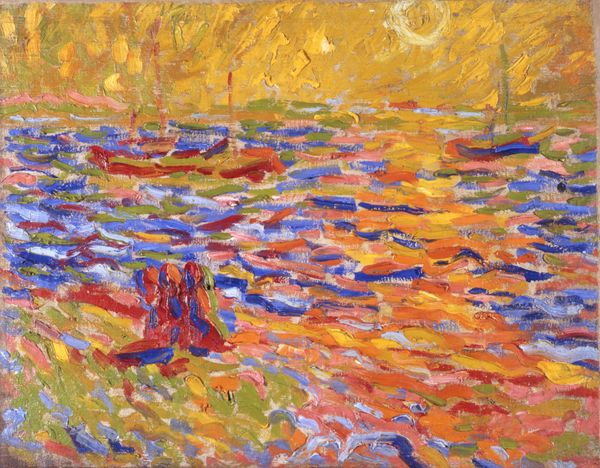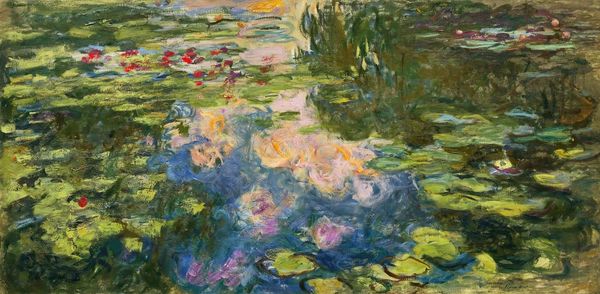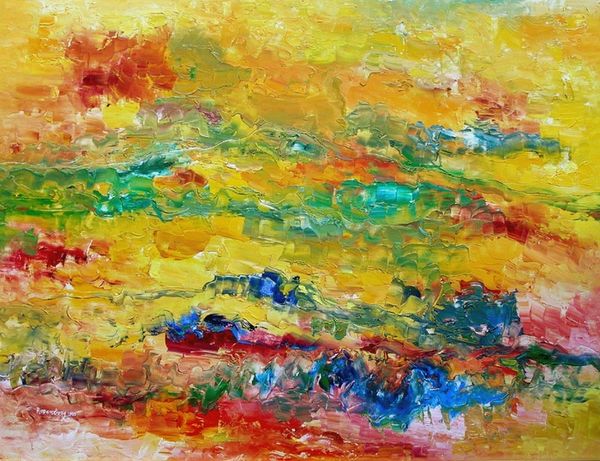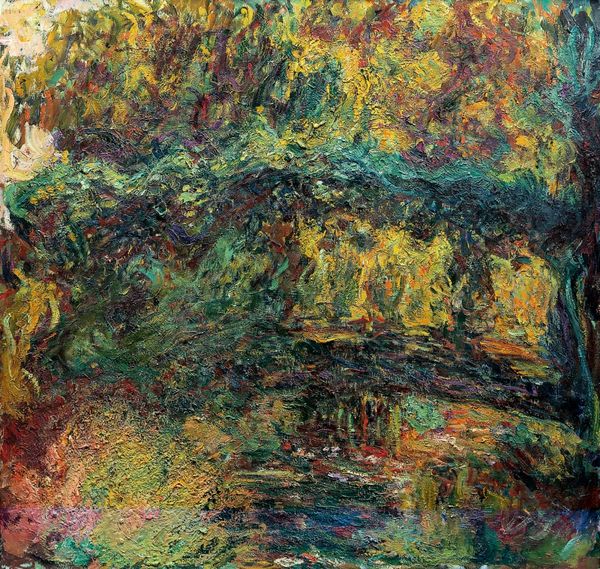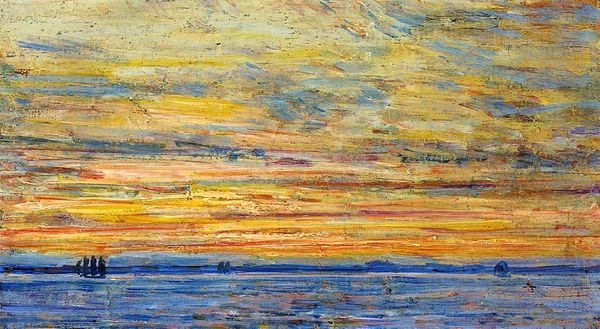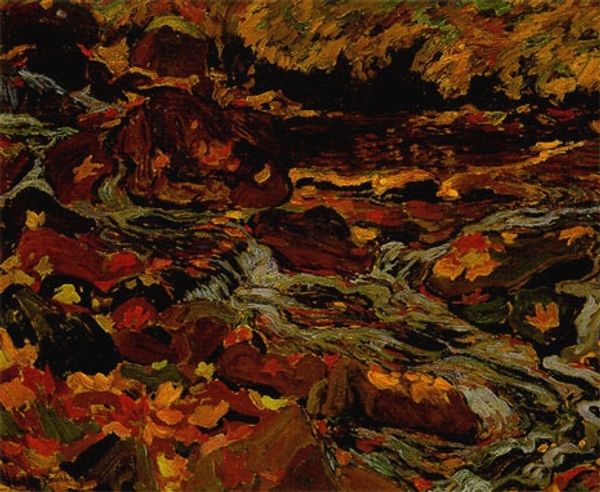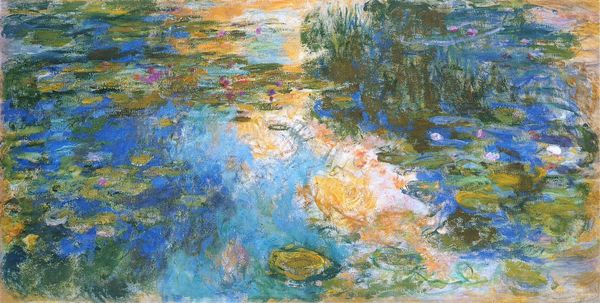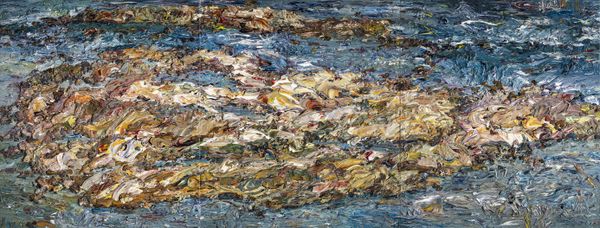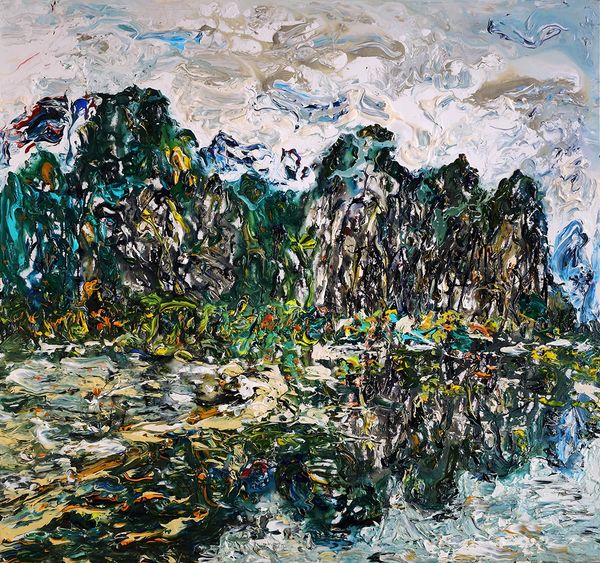
#
abstract expressionism
#
abstract painting
#
fauvism
#
impressionist landscape
#
fluid art
#
neo expressionist
#
acrylic on canvas
#
seascape
#
abstract art
#
expressionist
Dimensions: 57 x 71 cm
Copyright: Public domain US
Editor: Here we have Emil Nolde’s “Steaming Boats” from 1910, rendered in oil paint. I'm immediately struck by the thick impasto and the turbulent energy conveyed by the brushstrokes. It’s almost overwhelming. What do you see in this piece? Curator: I observe a dynamic interplay between colour and form, prioritizing the internal language of the painting itself. Note the way Nolde employs contrasting hues – the deep blues and greens against the vibrant yellows – to create a sense of visual tension. Editor: I definitely see that contrast, it's almost jarring. The brushstrokes seem almost haphazard at first glance, but there’s an underlying structure, right? Curator: Precisely. Consider how the diagonal arrangement of these strokes creates a sense of movement, guiding the eye through the composition. Also, think of how the materiality contributes meaning; the palpable thickness invites you to really notice his use of oil. Editor: So, rather than focusing on what the boats represent, we should focus on how the artist represents them through the pure visual language of the medium? Curator: Indeed. The subject is secondary to the expressive power of the brushwork, the formal qualities take precedence, allowing Nolde to convey an emotional intensity that transcends mere representation. Notice the layering technique, the impasto, and the vibrant colors. Editor: That's helpful. Looking at it that way, it’s much more about the experience of the storm, of the chaos, rather than a literal depiction of boats. Curator: Exactly. The painting functions as an object for contemplation, not as a window onto reality. Its essence is found within its surface, in the pure language of form. Editor: This has been a very different and clarifying perspective, shifting my attention to what is right in front of me. Curator: It's been enriching for me to focus strictly on how we interpret the pure, abstract elements within Nolde’s composition and recognize the potency of its execution.
Comments
No comments
Be the first to comment and join the conversation on the ultimate creative platform.


